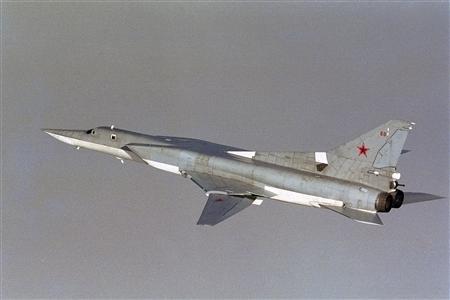 The chill between Russia and the West has brought Cold War-style military brinkmanship roaring back — with a 21st century twist.
The chill between Russia and the West has brought Cold War-style military brinkmanship roaring back — with a 21st century twist.
Today, it’s not enough for Russian bombers to probe U.S. air defenses off Alaska, for its fighters to barrel-roll around American reconnaissance aircraft over Eastern Europe or for its attack jets to buzz American warships at sea. Now, both sides battle over the airwaves and on social media over what actually happened — and who is to blame.
Pentagon officials tend to be judicious about releasing video of military operations in the air or at sea, but they want the world to know how destabilizing they say the Russians have become. That’s why they’ve reached for a weapon outside the military arsenal, but one they hope could be just as powerful: YouTube.
“Coming starboard side!” exclaims a crew member aboard the Navy destroyer USS Ross, cruising in the Black Sea. A sailor’s camera picks up a black speck on the overcast horizon. Within a few moments, it grows into the unmistakable beak-nosed, single-tail silhouette of a Su-24 Fencer, a classic Soviet-era attack jet — which screams past the ship at low altitude.
Internet users have watched this scene unfold more than 3.2 million times since the Navy, with the encouragement of leaders in Washington, posted a 42 second video of the encounter. The Pentagon wanted to show the world exactly what happened when the Russian fighter passed the American warship — and what didn’t….
These disputes epitomize the state of relations between Russia and the West as the U.S. and Europe try to isolate Moscow after its military aggression in Ukraine.
Washington has grown to accept Russia’s newly aggressive military posture as the new norm. Military officials say encounters with Russian aircraft were on the increase even before Russian troops invaded Crimea and pushed into Eastern Ukraine. And, according to the U.S. Northern Command, they are more frequent now than at any time since the collapse of the Soviet Union. Last week, another pair of Su-24s buzzed the Navy’s amphibious transport USS San Antonio in the Baltic Sea, though U.S. officials said there was “nothing unprofessional….”
Russian President Vladimir Putin “relies on threats and coercion because he believes they work,” said Jorge Benitez, a senior fellow with the Atlantic Council’s Brent Scowcroft Center. Russia, Benitez said, wants to “coerce neighbors to follow Putin’s wishes and intimidate others such as the U.S. and Western Europeans to respect Russia’s sphere of influence.”
But even though it may get attention in the short term, Benitez said, Putin’s strategy — and his muscular military posture — can’t go on forever.
“The more Putin uses military units to try to bully the West, the more he galvanizes Western opposition to his tactics and ultimate ambitions,” Benitez said.
Image: Russian Tupolev Tu-22M bomber off the coast of Norway, August 17, 2006 (photo: Norwegian Air Force)
